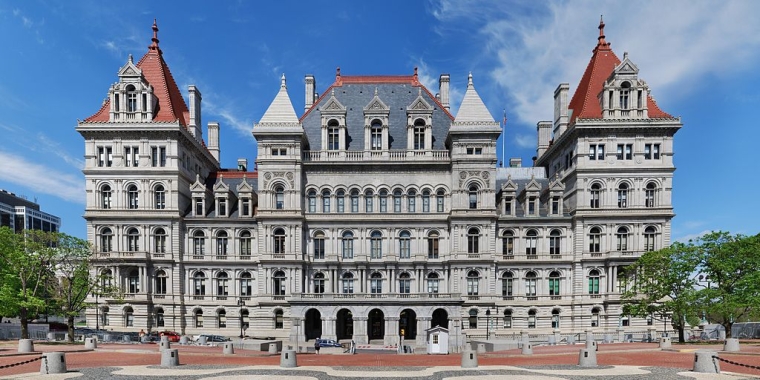
Testimony Before the New York City Council Education & Landmarks, Public Siting & Maritime Uses Committees on the Issue of School Overcrowding on October 3, 2008
Liz Krueger
July 15, 2010
My name is Liz Krueger and I am the Senator representing the 26th State Senate District, which includes Midtown, Murray Hill and the Yorkville, Carnegie Hill and Lenox Hill neighborhoods of the Upper East Side all of which comprise District 2 of the Community Education Council. Thank you Chairs Jackson and Lappin, and members of the committees, for the opportunity to present testimony on the very serious issue of overcrowding in New York City public schools and how it is affecting families, and in particular, students in CEC District 2 (my district) where schools are at 129% of capacity.
When the state Senate passed the New York City Education and Reform Accountability Act of 2002 we gave the Mayor greater control over management of the Department of Education (“DOE”) and the School Construction Authority (“SCA”). This change afforded the Mayor an opportunity to demonstrate strong leadership in improving our schools and reaching the goal we all share of building the best school system in the country.
It was intended that this change would help eliminate the bureaucracy, improve failing schools, reduce the high dropout rates, correct the lack of a structure to provide meaningful participation for the school community and most importantly bring about a new era of construction to help combat overcrowding in aging and inadequate school buildings. While the Mayor and his Chancellor, Joel Klein have continually assured the legislature, City Council, parents, principals, teachers and CECs that all of these items are part of their agenda, in many areas the promise of mayoral control has come up short; and nowhere more so than the issue of school overcrowding.
In CEC District 2 the issue of overcrowding has not lessened, and in fact it has grown worse during Mayor Bloomberg’s administration both because of inadequate coordination with the Departments of Building and City Planning and a demonstrated unwillingness to engage in serious conversations with the community about acquiring and retrofitting existing structures or identifying sites for building new schools.
The city Comptroller’s Office released a report in May entitled “Growing Pains” which documents its review of the Department of City Planning’s neighborhood population projections for 2000-2010, as well as DOE’s elementary and primary school enrollment projections by Community School District and official DOE capacity utilization data by school and CSD in October 2006. Needless-to-say, the Department of City Planning and the DOE vary widely on their projections. While the DOE projects that public school enrollment will decline significantly between 2005 and 2015, the Comptroller’s office identified where “new housing construction is leading to surging population, the demand for elementary and middle schools seats is growing and schools are operating near or above capacity.” It appears that at least one important reason for this view of school capacity stems from DOE consultants Grier Partnership and the method they use to analyze where to site new construction; Grier relies on a confidential methodology for enrollment projection calculations which do not include information about neighborhoods or specific building permits for new residential construction.
P.S. 116 on East 33rd Street in Murray Hill is a perfect example of the Comptroller’s findings and underscores this Administration’s lapses in leadership. The school, well known to the DOE, has suffered with a serious overcrowding issue for years. P.S. 116 is also in a neighborhood experiencing a surge in development with some 33 new residential buildings under construction. School officials, the PTA and elected officials have held numerous meetings with representatives from the DOE and SCA where many intelligent and creative ideas were proposed by the PTA for ways to site a new school or how to add on to the existing structure. The school community’s suggestions were met with a flurry of reasons from the DOE why they would not work or could not work and they seemed more interested in moving game pieces around a board by busing small children to schools far from their homes. PS 116 elementary students have had to start eating lunch at 10:00 a.m., a new pre-kindergarten program was forced to end in order to make room for increased enrollment and the gifted and talented program has stopped accepting students and current enrollees will be moved to other schools.
Whatever set of school capacity numbers are used and whatever data the formula is dependant upon, with already obvious overcrowding, Mayor Bloomberg and Chancellor Klein as advocates for school age children, must assume a more transparent and active role in alleviating school overcrowding. The severe current economic downturn will only increase enrollment in Fall 2009, as financially strapped parents of private school children will be unable to afford high tuitions and begin enrolling their children in public school.
I recommend improvements in planning in at least the following three areas:
- The DOE needs to insert itself into the planning process and coordinate with other agencies such as the Departments of Building and City Planning in order to better grasp and predict how a surge in development, birth rates and economic indicators in a neighborhood affects all of its community facilities.
- The DOE needs to partner with the city’s developers in a manner that stays true to the Administration’s vision, while also strengthening its infrastructure rather than weakening it. The Administration and developers must come to some arrangement where tax incentives induce developers to include schools in their residential developments. This practice has already been very successfully applied, but in far too few instances.
- Finally, the DOE should take an aggressive lead role in amending the Zoning Resolution to expand city-wide certain provisions of the South Richmond Special District Plan that would require the DOE to certify that sufficient school space exists for new development or the developer must provide school space in order to be permitted to build their project.
Thank you for your consideration of my views.
Share this Article or Press Release
Newsroom
Go to NewsroomSenator Krueger's February 2025 Update
February 28, 2025


Statement from Senator Liz Krueger On Mayor Eric Adams
February 18, 2025
